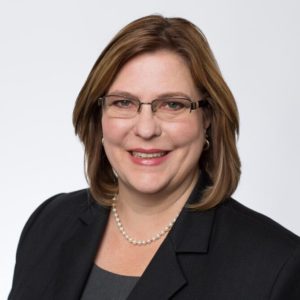

By Gwen Edwards, Managing Director of Golden Seeds
December 5, 2019
Anyone who suffers from allergies knows that sinus pain can make you quite miserable. Jennifer Ernst, CEO of Tivic Health, noticed that medical treatment was focused more on deadly diseases than on ailments that are making people suffer every day — like allergies. Seeing these gaps in treatment of many kinds of allergies — which affect millions of people — inspired her to bring evidence-based medicine to help solve the problem. The result is Tivic Health’s ClearUP, which offers a new way to treat sinus pain through gentle microcurrents.
Jennifer has a history of developing new products and markets in the technology space, starting at Xerox PARC and later at Thin Film Electronics ASA. In this Q&A, Jennifer chatted with Gwen Edwards, Managing Director of Golden Seeds, about how Tivic Health got started, challenges faced along the way, and offered some advice to early stage startups that are just getting off the ground.
JE: It started with a black box. John Claude, our co-founder and VP of engineering, saw a big microcurrent box being used in-office for treatment of sinus conditions and allergies. Having worked with microcurrents early in his career, he saw the potential for a portable, handheld solution. I came to know of John’s invention through shared connections in the Silicon Valley network. He’s a consummate medical device inventor, while my background is in building businesses.
Sinus cold and allergy treatments are a huge market. With millions of people suffering, over-the-counter (OTC) pharmaceuticals are a $130 billion segment. Yet, we still saw gaps in treatment. The only thing recommended for regular sinus health maintenance is flushing your nose with saltwater. John’s invention represented a fundamental breakthrough that could improve the lives of millions of people who suffer from sinus conditions.
We started the business on Sept. 16, 2016. It took some soul searching, but at one point we looked at each other and I said, “It would be irresponsible not to try.” Some family and friends invested, we completed our FDA strategy, filed provisional patents and from there we just kept building. Three years later, we have completed clinical studies, secured FDA clearance, built a high-quality core team and brought a product to the market.
Coincidentally, we began shipping Sept. 16, 2019, exactly three years to the day from filing incorporation paperwork.
JE: The broad market is more than 60 million people in the U.S. who suffer from sinus pain, pressure and congestion. Most doctors realize these symptoms go hand in hand though terminology varies by field. Some doctors call it atypical facial pain; some call it facial migraine.
Our product is FDA cleared for use on sinus pain associated with allergic rhinitis, and we’re working on getting approval for congestion. We also recently received our CE Mark allowance for “temporary relief of sinus pain, pressure and congestion.”
Sinus pain has a significant impact on quality of life, and unfortunately there haven’t been any good treatment options. This inability to treat sinus pain (or atypical facial pain) is also a pain point for physicians. Surgery can’t do anything because it’s related to the swelling of the tissue, and treatment options are primarily pharmaceutical. In fact, 13% of patients are prescribed opioids (though that is changing)!
So, we are new in this category and set up as a daily use product for one of the most pervasive chronic conditions. ClearUP® Sinus Pain Relief is a simple-to-use, home-use product that someone glides along the cheek, nose and browbone in a guided fashion. The device delivers a tiny amount of electrical stimulation in a proprietary waveform.
In a double-blind, controlled study, ClearUP had a fast-acting effect, and over 70% of people in the four-week, at-home study showed reduction in symptom severity and frequency. We’re showing fast-acting effects for a portion of users, efficacy as strong as the leading pharmaceutical on the market (Flonase) and no significant side effects. There’s not a single pharmaceutical that can make these claims.
JE: I think every entrepreneur says financing is a big part of the challenge and our experience was similar.
We’ve bucked conventional wisdom in a lot of ways. Medical innovation has been largely focused on the things that can kill you, while often ignoring the conditions that make people’s lives miserable.
Investments in medical technology are often driven by large reimbursement opportunities rather than large intrinsic markets. When I looked at this market, though, products are primarily OTC and 40% of sufferers aren’t even seeing a doctor. Then I looked at electrical therapies and saw many were struggling to secure any form of reimbursement.
We decided to focus on bringing evidence-based, microcurrent to mass underserved populations. Thus, ClearUP Sinus Pain Relief — an OTC medical device — was born.
I was really surprised given the size of the market, the scale and the margins that the classic healthtech investors had a challenge seeing the opportunity. Health investors were used to seeing reimbursement as the business model. We can make a strong business case on a non-reimbursed basis. I eventually realized that funds have raised their money on models that have succeeded in the past, but we’re charting new territory. So, we had to work new angles. In fact, many of our early investors suffered from allergies, tried the product and loved it. This summer, we had a large investment from a group of ENT physicians.
As far as other challenges, the CE Mark presents both opportunity and challenges. With both CE Mark and FDA Clearance, we are positioned for global expansion in over 190 countries, even though we’re still on our Series Seed funding. Getting us positioned to take advantage of that opportunity, while not over-extending the team, will be a balancing act.
There are some big trends that bolster our growth potential. One is the consumerization of healthcare — we all know that we have much more of a stake in researching our own therapies and investigating our own outcomes. Our direct-to-consumer model, supported by physician education, fits the current healthcare model in the U.S.
Another is the explosive growth of bioelectronic medicine. It was recently declared by McKinsey to be an under appreciated, multi-billion dollar segment, and the peripheral nerve stimulation applications are forecast to grow at 35% CAGR over the next five years.
The third is growing rate of sinus and allergy diseases associated with climate change and pollution levels. This market is not going away any time soon.
JE: We are doing online and in-store pilots with Walgreens, CVS and Best Buy. We are investigating some international partnerships that will be shaping up in 2020. We received our ISO 13485 certification in November. [ISO 13485 defines a comprehensive quality management system for the design and manufacture of medical devices.]
JE: Focus on your milestones with whatever capital you raise. That’s how you will be measured when you come back the next time. It’s also critical to have a basic infrastructure in place. You’re going to live with whatever you build for a long time, so it’s worth spending to get it right. This includes good legal counsel to get you set up, then keep everything clean as you go.
This is my second time around. I was CEO of a U.S. subsidiary and took it from eight people to a half-billion market cap in less than five years. Milestones and execution were everything.
JE: There are some seriously smart investors at Golden Seeds! The amount I’ve learned, and continue to learn, is amazing. Golden Seeds has been really good about opening up their Rolodex. They have a reputation for being tough and standing by their companies. That is consistent with our experience.
For more wisdom like this from other incredible female leaders, follow Golden Seeds’ blog.